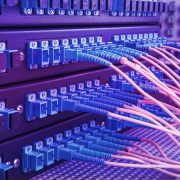The Common Optical Fiber Jargons
When you’re dealing with technology, you will inevitably end up dealing with terminology. No tech-related industry today manages to not have some terms and jargon that makes sense to them but leaves others a little lost. This is also true for the folks that work with and maintain fiber optic cables for networks. So when you are looking to buy some optic fiber LAN cables from otscable, you have a few terms to watch out for.
Today we’ll go over some of the most important and most common jargon you might encounter working with these cables. This can help you out whether you’re buying them, trying to understand how they work or talking to someone tasked with their maintenance and repair.
Optical Fiber
Let’s start with the innermost components. An optical fiber is a strand of glass, highly transparent and as pure as possible, that is meant to guide and reflect infrared light transmissions. It will have a core, which is where the transmission occurs.
Cladding
Cladding is what people call the outside layer of the fiber. It’s meant to trap light on the inside, rather than letting it leak out and corrupt the data. Cladding is designed to move so it can guide the reflections along, even through curvature.
Coating
The coating can sometimes be referred to as buffer or primary coat. This is a layer of hard plastic, meant to act as protection. In particular, it prevents moisture or physical damage from getting at the reflective materials on the inside.
Mode
The mode is nothing more than an electromagnetic field pattern that travels through the fiber. In this case, it’s a ray of light. These cables come in two modes, multi and single.
Multimode fiber is bigger and better at a short distance, as well as networks that don’t require that much speed. Single mode has a smaller core and is better for anything that needs to go a long distance at high speeds. Both get used in different contexts.
Plastic Optical Fibers
Plastic optical fibers are a type of cable that uses a larger core and are designed as multimode. They are at their best for reliable speeds over short distances. In recent times, you’re likely to see these as part of car communication systems, allowing for real-time reactions to the electronic inputs in modern vehicles.
Jacket
A jacket is the outer coating of the cable itself. The typical jacket is designed to meet fire codes and can resist some damage. However, if you intend to use fiber optics in industrial applications, you want to get special jacketing that’s more resilient and meets the appropriate regulations. This is distinct from armor, which is the material that discourages rodents and other pests from attempting to eat the cable.
Strength Members
“Strength members” is the term used for the fibers used to pull the cable. It might also be used in reference to the rod of fiberglass that prevents the cable from kinking.
Attenuation
Attenuation is what they call it when the optical power in the fiber goes down. That means the signal is weaker and there is potential data loss. This might occur as the light is transmitted in the fiber itself due to flaws in the reflective materials, in the transfer from splice to splice, or through intermediary devices along the data’s path.
Bandwidth
Bandwidth is the range of frequencies that the fiber component or network operates. Think of it as a highway. The bigger your highway, the more traffic can go through it. Higher bandwidth means it can handle more data coming through at the same time.
Scattering
Scattering is when the light changes direction. Usually, a small particle foreign to the cable will cause this. Scattering disrupts the transmission, causing a loss in signal strength.
Jacket Slitter/Stripper
A jacket slitter, also known as a jacket stripper in some places, is a tool. It’s used in repair procedures and is a specialized cutter intended for removing the outer jacket of the cable. There is a subtype known as a fiber stripper, which is meant to remove the buffer coating of the fiber itself.
Cleaver
A cleaver in the fiber optic world is another tool, one that you’ll see used in splicing more often than not. It is a precision implement meant to “break” the fiber at a specific point and angle, creating a smooth, flat end. This makes splicing possible. Some might also use a cleaver to polish the core. These are used in conjunction with marking tools called scribes.
Puck and Film
If you need polishing, you need a puck. These hold the connector in place to retain proper alignment. You use these in conjunction with a polishing film, allowing you to get the fine grit out of the end of the connectors.
Conclusion
Optical fiber can be confusing to talk about because there are so many terms that are used around them. Educate yourself on the most common and most important ones. A little knowledge can go a long way, after all.
















